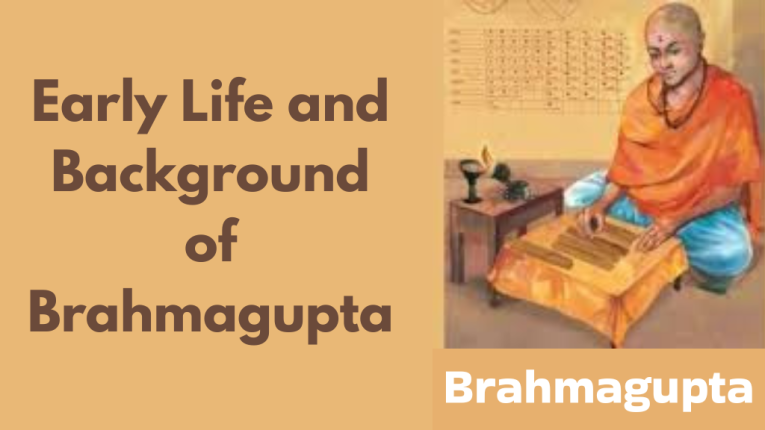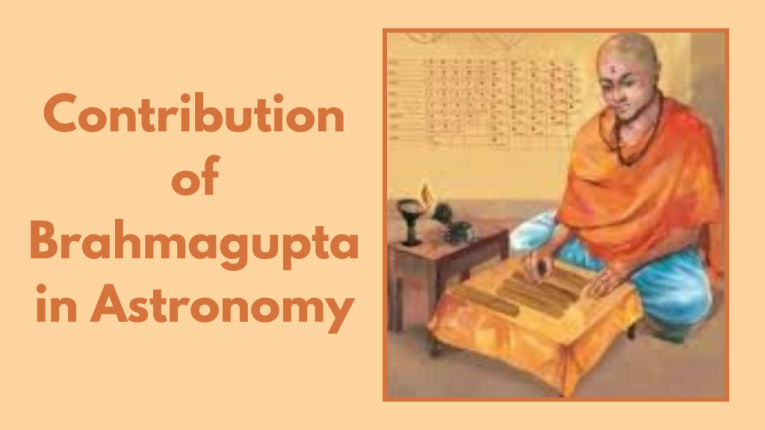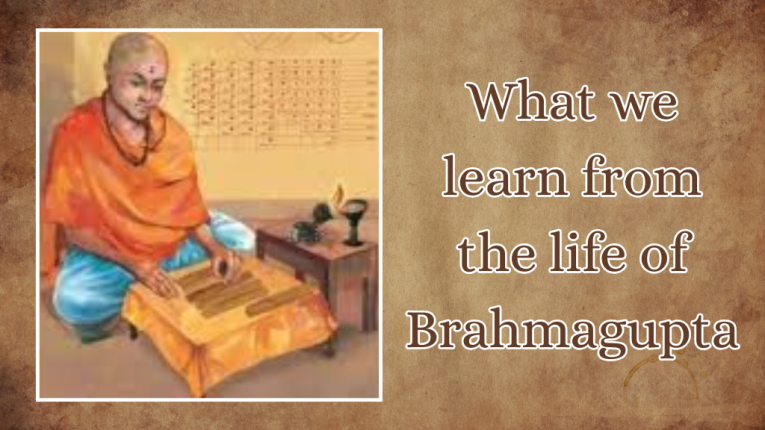Who was Brahmagupta?
Brahmagupta was a very famous Indian mathematician and astronomer in the 7th century AD. He was born in 598 AD in Bhinmal village in Rajasthan and later became the head of the astronomical observatory at Ujjain, a major center of learning in ancient India.
Brahmagupta was the first person to define what “zero” was and he gave rules for using zero in arithmetic operations, which was a pretty revolutionary idea that changed mathematics forever.
Early Life and Background of Brahmagupta
Brahmagupta was born in 598 AD in a town called Bhinmal, which is located in present-day Rajasthan. Bhinmal was considered a centre of education, culture and scholarship in its time. Brahmagupta grew up in an era when India was a pioneer in mathematics, astronomy and philosophy.
He belonged to a Brahmin family and had a good command over Sanskrit, which was the main language of science and mathematics at that time. Although very little is known about his personal life, it is believed that he studied mathematics and astronomy at the famous astronomy school of ancient times. Ujjain was considered a major center of scientific education at that time.
Brahmagupta had established himself as a distinguished scholar by the age of 30. He then became the head of the astronomical observatory at Ujjain, where he carried out his most important and famous work.
What are the Major Works of Brahmagupta?
Brahmagupta wrote many important texts, but two of the most important texts are given below:
1. Brahmasphutasiddhanta (628 AD)
Brahmagupta’s most famous work is ‘Brahmasphutasiddhanta’, which he wrote at the age of just 30. Brahmasphutasiddhanta means – ‘correctly explained teachings of Brahma’. In this book, he has given information on many subjects of mathematics such as arithmetic, algebra, geometry, trigonometry and astronomy.
The most special thing about this text is that it is considered to be the first book in which zero was accepted as a number and rules related to it were made.
2. Khandakhadyak (665 AD)
‘Khandkhadyak’ is considered to be another important book of Brahmagupta, which was a kind of guide used for astronomical calculations. In this book, he has explained topics like planetary motion, solar and lunar eclipses, and time measurement in an easy way.
This treatise is considered to have had a great influence on Indian and Islamic astronomy of its time.
Important Contributions of Brahmagupta in Mathematics
Brahmagupta made important contributions to mathematics that were way ahead of his time. Here are the most notable contributions:
1. He described zero as a number
Before Brahmagupta, zero was used only as a placeholder. But Brahmagupta was the first mathematician to consider zero as a real number and also made different rules for it.
He explained how the rules of mathematics like addition, subtraction, multiplication work with zero.
Let us know what rules Brahmagupta gave regarding zero.
a + 0 = a
a − 0 = a
a × 0 = 0
0 ÷ a = 0 (for a ≠ 0)
However, he had to struggle a lot with 0 ÷ 0, which he described but could not define properly (modern mathematics considers it undefined).
2. Gave rules for negative numbers
Brahmagupta was the first person to explain negative numbers properly and make rules for working with them.
He told that if subtraction is done and the answer is less than zero, then it is a negative number. Along with this, he also told some important rules:
Positive number × negative number = negative
Negative number × negative number = positive
Subtracting a negative number = adding it
These rules were considered very special at that time, because in many parts of the world mathematicians did not recognize negative numbers, but Brahmagupta brought a big change by explaining it.
3. Solutions of Quadratic Equations
Brahmagupta gave general solutions to quadratic equations. He worked on equations of this type, which are mentioned below:
ax² + bx = c and provided methods to solve them using square roots – much like the quadratic formula we use today.
4. Geometry and Trigonometry
He improved ancient Indian geometry by calculating the areas of triangles, quadrilaterals and circles. He also provided formulas for calculating the length of diagonals and heights.
5. Undetermined Equations
He worked on Diophantine equations – equations with integer solutions – and laid the groundwork for later developments in algebra and number theory.
Contribution of Brahmagupta in Astronomy
Brahmagupta’s understanding of astronomy was very good and impressive. He observed the sky with knowledge, made calculations and told many important things from his thinking and understanding. Let’s know about some of his main works:
1. About the movement of planets
Brahmagupta tried to know how the planets move and when they appear together in the sky. His model was made with the Earth as the center (geocentric) according to that time, but still his predictions were largely accurate.
2. About solar and lunar eclipses
At that time people considered eclipses to be myths or demonic events, but Brahmagupta told that eclipses actually occur due to the shadow of celestial bodies, such as the shadow of the moon or the Earth. This was a huge scientific change.
3. Time measurement
Brahmagupta explained ways to measure time from seconds to centuries. They created formulas that could be used to calculate days, months, and years — and this applied to both lunar calendars and solar calendars.
Legacy of Brahmagupta
The great Indian mathematician and astronomer Brahmagupta’s contributions were not limited to India. His work was translated into Arabic in the 8th century, and his ideas had a profound influence on Islamic mathematics and astronomy. His theories then traveled from Arab countries to Europe and helped in the development of modern mathematics.
The Arabs called Brahmagupta “Brahmasupta”. His ideas on zero, negative numbers and algebra were used by Islamic scholars such as Al-Khwarizmi and later by European mathematicians during the Renaissance.
Today, Brahmagupta is remembered as:
- The father of zero
- An early pioneer of algebra
- A visionary astronomer
- And a great figure in the history of science
The influence of his discoveries and ideas is still seen in the world of mathematics and science.
Interesting facts about Brahmagupta
Let’s know the main interesting facts about Brahmagupta:
- Brahmagupta lived during the time of King Vyaghramukha, who ruled the Arapa dynasty.
- He criticized some other schools of astronomy and also corrected some mistakes of older scholars like Aryabhata.
- Brahmagupta believed that the Earth is round and has gravity, and he said these things at a time when these ideas were not generally accepted around the world.
- Although Brahmagupta was a man of scientific thinking, he still believed in some traditions related to religion and astrology. This shows that science and spirituality often went together in ancient India.
What we learn from the life of Brahmagupta
The life of Brahmagupta teaches us a lot of things, such as:
- Curiosity and observation towards anything can lead us to great discoveries.
- Questioning your old beliefs and thinking logically takes you on the path of your progress.
- Mathematics is not just about numbers – it helps us understand how the world works. The contributions of our ancient civilizations are the backbone of modern science.
Conclusion
Brahmagupta was not just a mathematician or astronomer, but also a man of great vision. His ideas and theories show that he understood mathematics, science and philosophy very deeply. His work not only advanced science in India but also gave a new direction to mathematics and astronomy.
He looked at numbers and the universe in a way that was hundreds of years ahead of his generation. His introduction of zero as a number, work on negative numbers, rules of algebra, and calculation of planetary motion and eclipses — his contributions to all these made him one of the greatest minds in history.
When a large part of the world was still trying to understand the basics of mathematics, Brahmagupta was doing complex calculations, predicting eclipses and working on the mysteries of the universe.
He was truly one of the greatest mathematicians and astronomers of India, whose knowledge gave a lot to the world of science.





